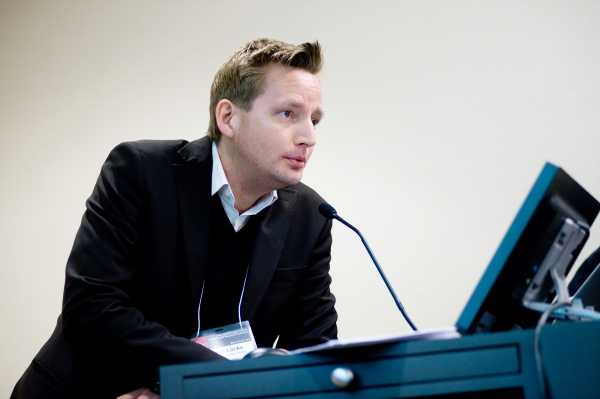
Professor Lücke teaches a course for students interested in becoming secondary history teachers in Germany. An important component in this course is an eight-week internship in which the teachers in training have to implement a complete project for integrating testimonies in their history classes. In the course of their internships, the teachers in training invite 60 high school students ages 16 to 18 to visit the Freie Universität Berlin on three separate occasions to watch testimonies from the VHA and interact with the teachers in training about the content. The teachers in training work with the high school students on topics such as antisemitism, Jewish history in Europe, and the history of World War II. This provides a context for the content so that high school students understand the testimonies in the classroom. At the end of the internships the teachers in training are required to write a 40-page report reflecting on the use of testimonies in history education, practical things that worked, and difficulties that arose when using testimonies in their high school classes.
Professor Lücke focuses on the characteristics of language that emerge when analyzing the testimonies from the Archive, particularly aspects of translation and code switching. The Visual History Archive provides opportunities to find testimonies from 34 different languages. The variety of languages in the Archive, according to Professor Lücke is a direct result of persecution. Due to persecution, many survivors escaped to different countries and had to leave the region of their native language to find homes in countries in which the language spoken was not their mother tongue. Many survivors decided not to use the German language when speaking about their pain, and gave their interviews in English to reach a broader audience, as many immigrated into English-speaking countries after World War II. While giving their testimonies in English they used special terms of the German language to point to certain details of their persecution, since German was the language they heard when these details happened to them. This, Professor Lücke contends, is code switching. So the special use of language is a result of persecution and is an important characteristic of remembrance of their persecution.
Usage of the testimonies in the internship program is useful in that first, the history of National Socialism and the Holocaust are the most commonly taught subjects in German history. Second, a common aspect of history is related to the connection between history and language. Teachers become aware of the use of language by searching the Archive to find testimonies that illustrate circumstances in significant ways. Professor Lücke uses the example from the VHA of Margot Ashworth, who was born in Berlin in 1927. She remembers a situation in school around 1934, when she was told to sing the German national anthem. She states, “The only time that I got in trouble was when I could not sing the national anthem properly. It’s not a difficult song, but the national anthem shows you a little bit about the Third Reich.” During the testimony she sings one bar of the anthem in German. Translated from German it means Germany over everything—over everything in the world. In this short passage of her testimony, Professor Lücke concludes, Ashworth explicitly uses the German language to highlight a special aspect of her persecution. By singing the anthem in German, it is code switching, changing from English to the German language. The teachers in training use this short video clip to ask their high school students to reflect on why Ashworth suddenly used the German language when singing the national anthem. The interchanging of language here is code switching, which helps Margot remember the persecution as an act closely connected to language.
Professor Lücke contends, “Reflections on the use of language in the testimonies provide students with insights that history is language and expresses the pain of persecution.” The use of testimonies in history education, especially in the field of teacher training, helps them to not only understand the content but also gives them insight into the narrative character of history. Students come to realize that teaching history is more than just a declaration of facts and details about the past. It is necessary to know that history is always a story being told by the use of language in a narrative construct formed by language. Professor Lücke concludes that “the multilingual character of the VHA and the use of code switching by the survivors show students, that language is not just a vehicle for telling their story but is in fact history itself.”